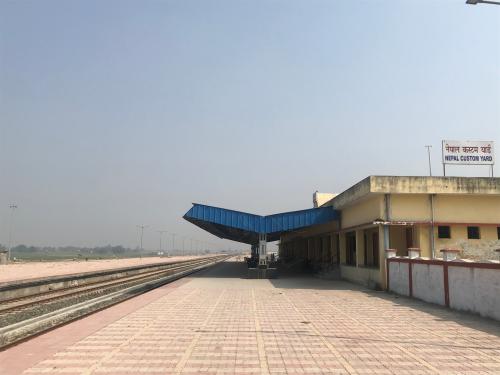Content from the Brookings Institution India Center is now archived. After seven years of an impactful partnership, as of September 11, 2020, Brookings India is now the Centre for Social and Economic Progress, an independent public policy institution based in India.

The 2015 Nepal earthquake, one of the deadliest in its history, evoked an outpouring of support from the international community in the form of cash contributions, in-kind relief, and search and rescue operations. Among the quickest to respond was India, who launched Operation Maitri by deploying the Indian Army, the Air Force, and other specialised teams.[2] Claiming it to be its largest-ever disaster relief operation, India’s response garnered praise from many quarters with a top UN official acknowledging the country’s role as a “first responder”.[3] The relief operation also coincided with the Modi government’s focus on regional cooperation, including assertive claims to take on the role of a “first responder” to regional crises.[4]
Nepal’s then Ambassador to India recognised India’s timely efforts and called the response “unique” in its scale.[5] However, as the relief measures went on, there were also accusations of the Indian contingent hindering other international aid efforts, lack of coordination between Indian and Nepali agencies, and insensitive reporting by Indian media.[6] As a result, India’s largely successful operation raised some questions on its organisational and technical preparedness towards disaster relief and management in the region. Moreover, the massive international response to the crisis featured bilateral assistance from six different South Asian countries but with no coordinated relief effort, including from the South Asian Association for Regional Cooperation (SAARC). India’s leading role thus paradoxically also exposed the absence of effective regional mechanisms for disaster relief in South Asia.[7]
The case of Nepal reflects four trends in India’s approach to Humanitarian Assistance and Disaster Relief (HADR). First, the centrality of its immediate neighbourhood. Geographically, India’s HADR historical footprint can be largely traced to its subcontinent and, in a more limited way, to the Indian Ocean region. According to one estimate, more than two-thirds of India’s humanitarian assistance has been directed to South Asia.[8] India has carried out similar relief operations to assist its neighbours in the recent past, including after the 2004 tsunami, the 2005 India-Pakistan earthquake, cyclones Nargis and Mora in 2008 and 2017 respectively, the 2014 water crisis in the Maldives, and the Rohingya refugee crisis in 2018.
Second, South Asia is particularly vulnerable to natural calamities.[9] Since 1970, the number of disasters in the region has increased five-fold with estimated direct losses amounting to US$80 billion.[10] The region is also the most exposed in the world to flooding, the second most exposed to cyclones, and it experiences most of its disaster fatalities due to earthquakes.[11]
Third, under the label of “first responder,” India has been signalling its intent to be a leading actor during emergencies in its neighbourhood. Commenting rather positively on the experience so far, in 2019, the Minister for Home Affairs Amit Shah emphasised that, “in the Indian sub-continent, we have been playing the role of the first responder in the case of disaster… India is leading the initiatives in disaster management and disaster resistance.”[12] Such ambitious assessments and declarations, along with India’s improved economic and military capabilities have led to greater expectations from neighbours in times of crises.
Finally, beyond the case of Nepal’s earthquake, a range of new types of emergencies is also plaguing the region. Such non-traditional crises include pandemics, chemical and biological accidents, industrial failures, and terrorist attacks. Together, they have pushed the boundaries – both geographically and technically – of the traditional conception of humanitarian crises. The COVID-19 pandemic has emphasised the changing nature and growing complexity of such emergencies. In an era of increased uncertainty, India will have to adapt its approach to traditional disaster response.
To realise its leadership ambition, respond to new expectations, and address an increasingly complex and frequent range of emergencies in the neighbourhood, India will have to adapt on two fronts. Internally, India needs to focus on better coordination between the multiple government agencies handling overseas relief operations, state governments providing cross-border assistance, the media, and civil society. Externally, India must improve bilateral and multilateral collaborations with its neighbours and leverage regional institutions for disaster management.
The Brookings Institution is committed to quality, independence, and impact.
We are supported by a diverse array of funders. In line with our values and policies, each Brookings publication represents the sole views of its author(s).




